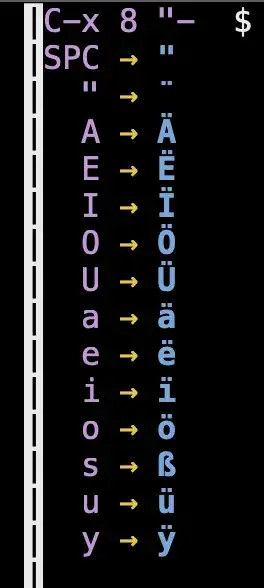For typing german text with an english keyboard layout the binding C-x 8 " is very valuable. After typing it I can insert umlauts easily. Here is what which-key shows me after typing C-x 8 "
I use this so often that I would like to use C-x 9 as an "alias" for this binding.
Unfortunatelly I can't figure out how. C-x 8 " is only a partial binding if I see it correctly. describe-key C-x 8 " doesn't show me anything and just waits for further input. It also doesn't seem to be
Ideally I would like something like
(set-global-key-alias-or-so "C-x 9" "C-x 8 \"")
or
(global-set-key (kbd "C-x 9") 'whatever-is-behind-C-x-8-\")
